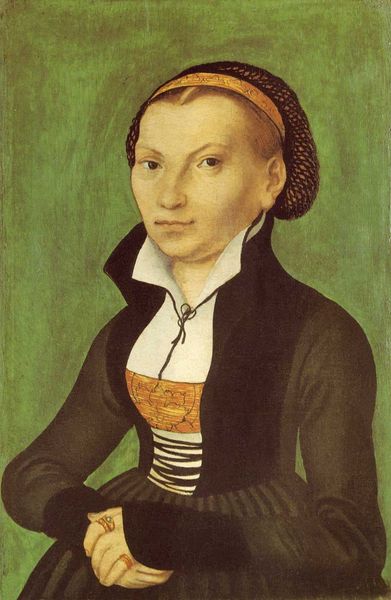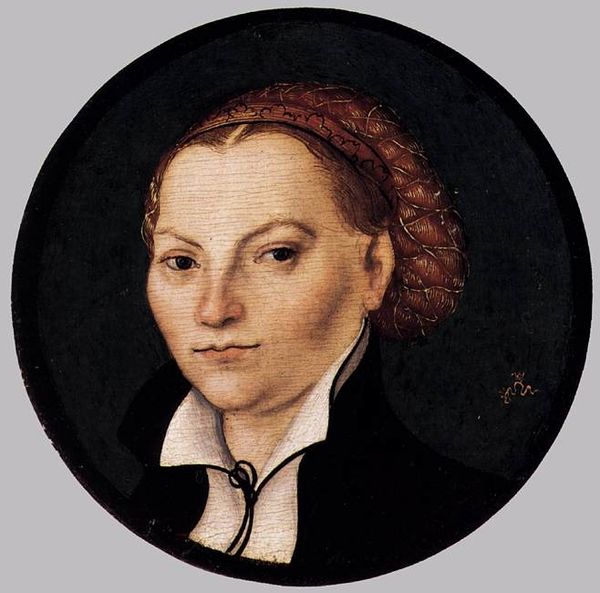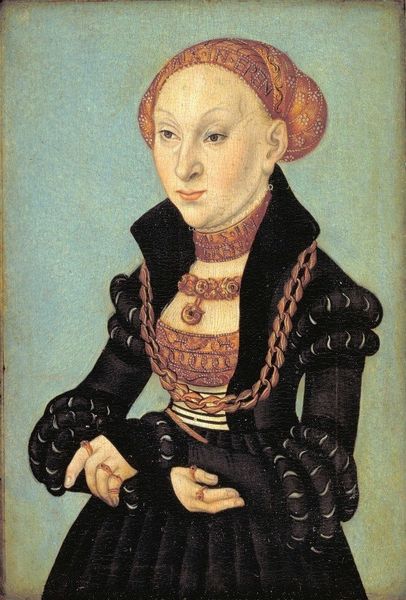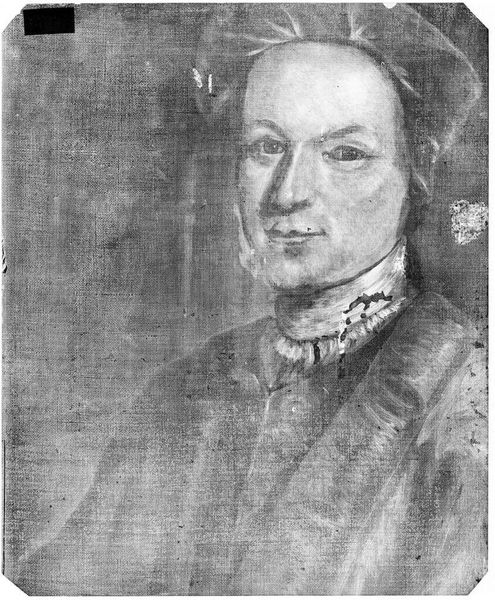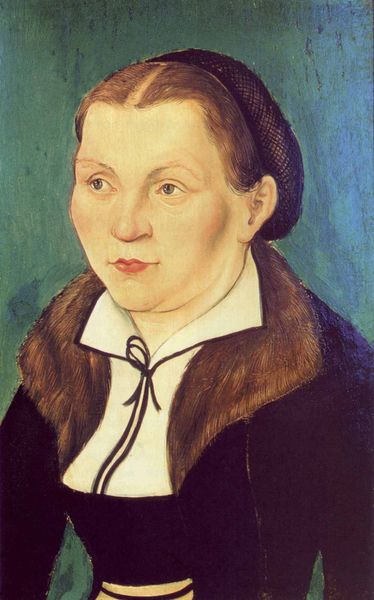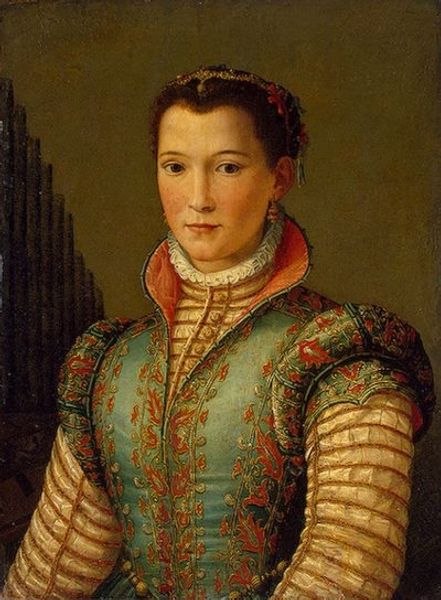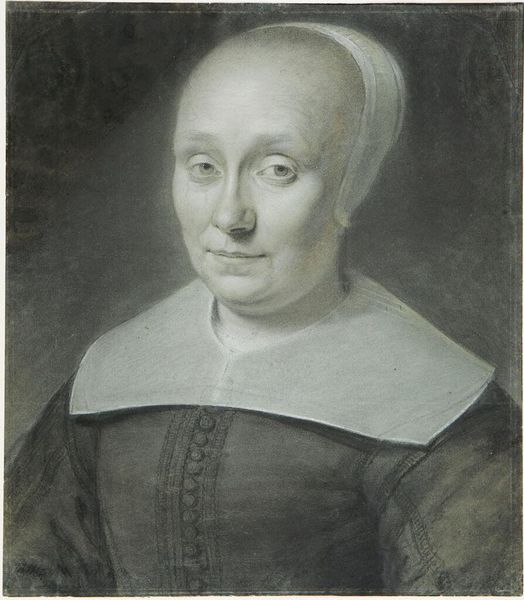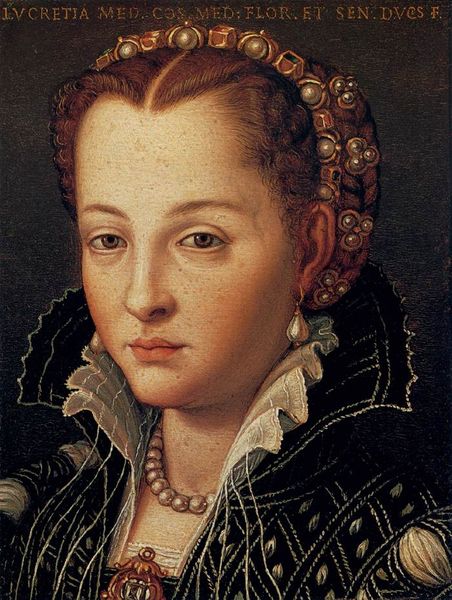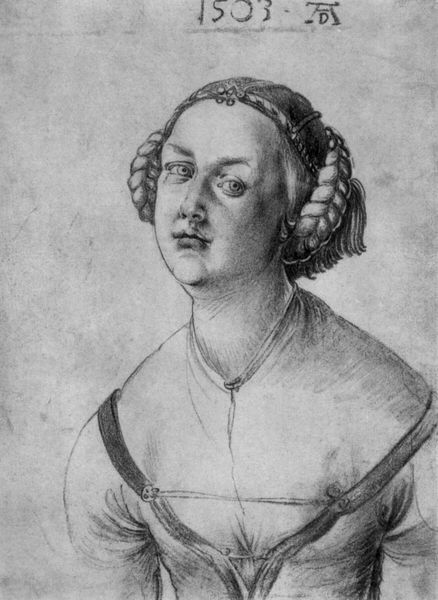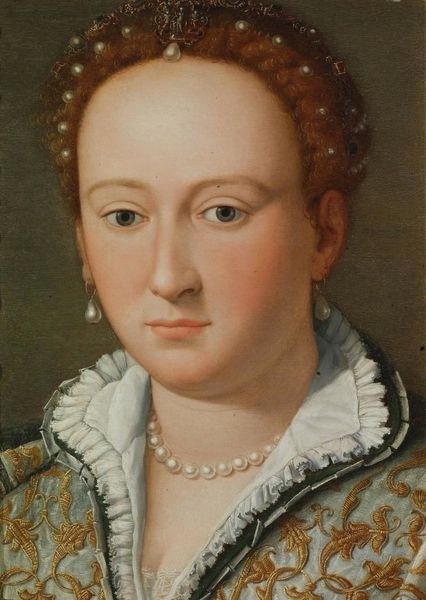
painting, oil-paint
#
portrait
#
painting
#
oil-paint
#
11_renaissance
#
history-painting
#
northern-renaissance
Dimensions: 13.3 x 19 cm
Copyright: Public domain
Curator: Up next, let's consider this arresting image. Lucas Cranach the Elder painted "Katharina Luther" in 1526, employing oil paints for this rendering. Editor: Immediately, there’s a gravity to this portrait that just grabs you. The darkness surrounding her, contrasted with her pale skin, it makes you wonder about the story hidden within those eyes. Curator: Yes, portraits during the Renaissance often served as symbols of status, but this one feels so deeply human. Note her clothing. The modest dress with just a touch of ornamentation signifies Katharina's commitment to the Reformation’s values of simplicity. Editor: Right, and even the inscription overhead, simply her name – Katharina Lutterin – almost has an air of democratic plainness to it, wouldn’t you say? It feels worlds apart from, say, royal portraiture that’s crammed with symbols. Curator: Precisely. However, notice how the ring on her finger signifies her marital status and emphasizes the Luther’s view on the sanctity of marriage. These symbols reflect broader religious reforms impacting family structure in society. Editor: Thinking about cultural weight… for her to become more than wife of Martin Luther– that's revolutionary, a complete paradigm shift in female identity! I also can’t help feeling a strange tenderness towards her face… it isn't idealized beauty; there's an unvarnished realism here, even a vulnerability, which gives the picture so much power. Curator: That honesty is key. Cranach presents her as neither untouchable idol nor simple housewife but instead reflects how she actively engages with a tumultuous religious shift. Editor: And what lingers is this image: the real, human Katharina – mother, thinker, landowner, and unexpected champion for religious upheaval captured vividly with remarkable directness. Curator: Indeed. With subtle details, the Cranach gives a monumental depth to this incredible woman, capturing something fundamental about a time of transformative shifts.
Comments
No comments
Be the first to comment and join the conversation on the ultimate creative platform.
